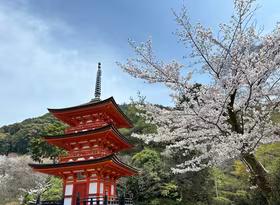
Did the domestic tourism boost reach the regions that needed it most?
The global tourism industry was hit hard by unprecedented disruption from COVID-19 and ensuing travel restrictions in 2020. In New Zealand, the international tourism tap was firmly turned off. On the flipside, New Zealanders developed a newfound appreciation for their own backyard, ticking our beautiful glaciers, fiords, and more off their bucket lists.
The importance of tourism across New Zealand’s regions couldn’t be more uneven, ranging from Mackenzie where 65% of employment relies on tourism, through to Kawerau with just 2% according to Infometrics estimates. The domestic tourism boost came at a crucial time when the tourism industry was suffering the absence of international visitors – but it begs the question – did the domestic boost reach the regions that needed it most?
All regions experienced a domestic tourism boost…
The domestic tourism boost benefited all regions to some extent, and generally the regions with a higher reliance on international tourists pre-COVID gained the largest increases in domestic spending. This trend makes sense – our regions which were most reliant on international tourists tended to have an inherent appeal to tourists and established tourism infrastructure such as accommodation and attractions. Anecdotally, many Kiwis who fared well financially through the COVID-19 lockdown felt a sense of patriotic duty to patronise struggling regions and their businesses. Perhaps most importantly, these areas also had the highest amount of spare tourism capacity (with international visitors gone), providing both a larger choice for consumers and a more urgent need for providers.
As Chart 1 shows, Fiordland, Queenstown-Lakes, Mackenzie, West Coast, and Kaikoura all earned more than 50% of their tourism spending in the March 2020 quarter (pre-pandemic) from international tourists. Fast forward a year, and overall, these areas experienced a 35-98% increase in domestic spending in the March 2021 quarter compared to March 2020 as domestic travel tried to replace the loss of international tourism (see Chart 1).
Chart 1 shows that there is a trend showing that the areas with the largest exposure to international tourism tended to achieve a stronger domestic spending boost at the start of 2021. However, that trend isn’t true for all areas – Auckland stands out for having a fairly large reliance on international tourism spending, but not as much of a domestic travel boost.
Critically, even a strong boost in domestic spending for those areas with a significant international tourism focus couldn’t fully fill in for the lost spending.
…but the domestic tourism boost wasn’t enough for some
Overall, the domestic tourism boost in the first quarter of 2021 from a year earlier amounted to an extra $494m, compared to a loss of $834m of international spending. Across our most tourism-reliant regions, the heroic boost in domestic tourism was only a partial offset for the loss of international tourism. Chart 2 shows that tourist spending in Fiordland, Queenstown and Mackenzie was down over 40% overall. Spending in the West Coast, Kaikoura, Rotorua and Auckland was down more than 20%.
At the other end of the spectrum, some of regions least reliant on international tourism have come out better off from the domestic tourism surge. In particular, regions within driving distance of a major city such as Wairarapa, Coromandel, Northland and Hurunui have gained as Kiwis expressed a preference for short drive-based trips. These regions had little to lose from international tourism, and everything to gain from domestic tourism.
Domestic surge is petering out
Domestic tourism experienced a remarkable surge through July and into August 2020, as Kiwis revelled in the freedom of Alert Level 1. Chart 3 shows domestic cardholder spending on accommodation and provides a good proxy for domestic tourism activity overall. Domestic tourism partially bounced back after the Auckland lockdown in August but has been soft since Labour Weekend in October 2020. Surges in domestic tourism (compared to pre-COVID) are now confined to holiday periods, such as the two weeks following Christmas. It appears that Kiwis have either ticked off their domestic tourism bucket list or spent up their international travel fund.
Australian bubble won’t help everywhere
The recently opened travel bubble has been held up as something of a holy grail for the tourism sector. At a macro level, this expectation is true as there is more for New Zealand to gain than lose. In 2019, Australian tourists spent $2.9b in New Zealand, compared to New Zealander’s spend of $2.6b in Australia. Although the bubble means a loss of domestic tourism spend, this loss should be more than compensated by an increase in international tourism spend.
However, as with all things tourism-related, the regional effects will vary widely. In the year to March 2020, the average Australian visitor spent an average of 10 days in New Zealand per trip, compared to 18 days for all international visitors. Australians are more likely to make shorter trips to New Zealand, which may limit the extent to which they can dissipate throughout the country. It certainly seems that the positive effects of the bubble will be concentrated around regions with direct flights to Australia. Currently, direct flights to Australia are limited to Auckland, Wellington, Christchurch and Queenstown, with Infometrics analysis showing that inbound passenger volumes are at around 30% of pre-COVID levels.
Where to next for travel?
With the Australian Bubble now open, minds are turning to how and when New Zealand will eventually reopen to the world. The vaccine rollout provides hope that reopening is possible sooner rather than later, but so far there has been little concrete policy thinking shared publicly about how New Zealand will integrate back into the global travel system. Only time will tell what the next steps might be.















